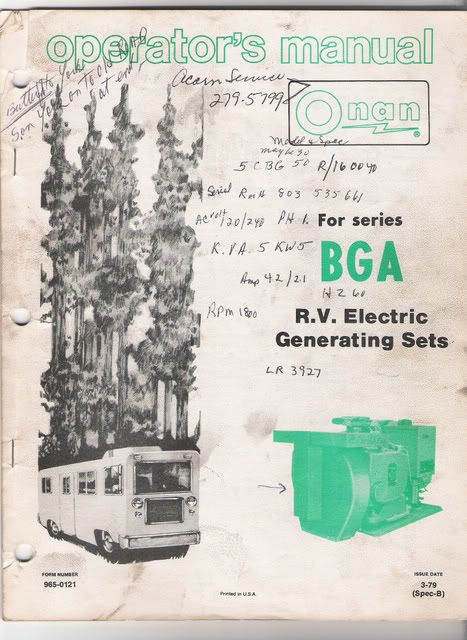Go to...  | Start A New Topic  | Search  | Notify  | Tools  | Reply To This Topic  |  |
Glassnose Aficionado |
In my Barth binder I have the original Onan manual and on the cover is the absolute ugliest rendition of a motor home ever drawn. Does someone who knows how to use a scanner and get it posted have this pic? If not, I'll scan it and try to figure out how to get it to photobucket so you can all have a chuckle. Remember, this was '81, not '55. 79 Barth Classic | ||
|
Glassnose Aficionado |
OK, finally got it uploaded to PB. Don't ask about all the scribbling. Just take a look at the fine motor home!  79 Barth Classic | |||
|
While not an exact match to Onan's concept, here's one that comes close: http://images.google.com/imgres?imgurl=http://www.kwyji...svnum%3D10%26hl%3Den | ||||
|
| First Month Member |
I think I remember that coach. The plans were sold by Glen L, a company in CA that specialized in selling plans for ugly plywood boats. I believe the MH was featured in an issue of the short-lived magazine, Popular Plywood, which was funded by the plywood industry in hopes of stemming the trend toward fiberglas boats and RVs. The coach was so rickety that it had angled supports where the roof met the sidewalls, which could be seen inside the overhead cabinets. . 84 30T PeeThirty-Something, 502 powered | |||
|
| The Old Man and No Barth |
Actually there were two versions of these plans. The original used shelf brackets to brace the roof corners & they were substantially concealed by internal wall coverings. The version El Segundo Bill refers to is the so-called "stealth" version built entirely of wood in hopes of fooling highway radar. Engineering calculations necessitated a gusset a minimum of 12" on each angle to tie the frames & rafters together. Except for its intrusion into overhead cabinet space, this solution was adequate, but a problem resulted from the need to reduce gusset sizes around door & window openings. This caused the coach body to wrack around those openings, quickly fatiguing the wood structure. At the end, the all wood model failed. First, it never achieved sufficient speed to register on highway radar, & finally, the flat front end design caused handling problems. The photograph is misleading in that the front appears perfectly vertical. Actually, in an attempt to give it the illusion of speed, the design was slanted forward slightly at the top. This generated a lifting effect which caused the front end to become completely airborne at approximately fifty miles an hour. The Henneberg air dam, constructed of plastic garden edging might have prevented this problem, but it had not yet been invented. The result was that there are at least 2 documented instances of these units leaving the road and doing a slow roll before crashing upside down & shattering. Attempts to solve this characteristic aerodynamically failed, & the design was ultimately abandoned. | |||
|
 3/23 3/23 |
Probably the need for radar stealth was to avoid not making speed minimums on interstates. Was the 50 mph achieved only on downhill runs or did they offer something greater than standard big blocks? Going airborne, an updated Spruce Goose. Howard Hughes would have been proud. | |||
|
| Powered by Social Strata |
| Please Wait. Your request is being processed... |
|
This website is dedicated to the Barth Custom Coach, their owners and those who admire this American made, quality crafted, motor coach.
We are committed to the history, preservation and restoration of the Barth Custom Coach.
We are committed to the history, preservation and restoration of the Barth Custom Coach.